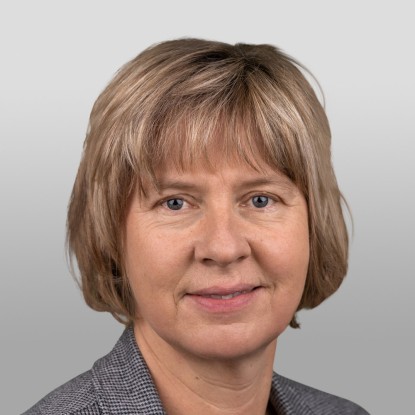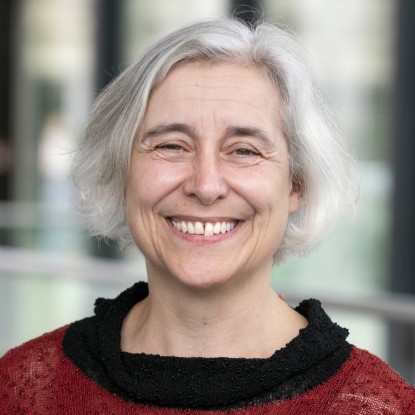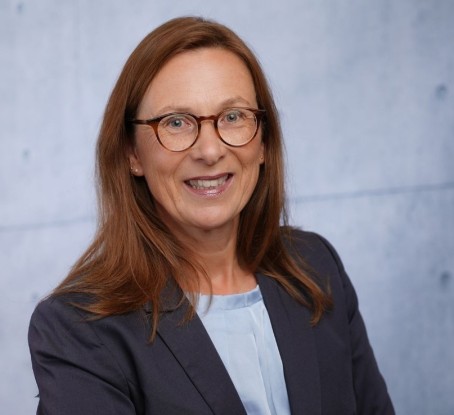Dienstag, 29. Oktober 2019, 15:15 – 16:15 Uhr, Raum S2|15 401
Referent:Yingkun Li (TU Darmstadt)
Abstract: The theory of complex multiplication tells us that the values of the j-invariant at CM points are algebraic integers. The norm of the difference of two such values has nice and explicit factorization, which was the subject of the seminal work of Gross and Zagier on singular moduli in the 1980s. In this talk, we will recall this classical result, and report some progress on a conjecture of Yui and Zagier. This is joint work with Tonghai Yang.
Dienstag, 26. November 2019, 15:15 – 16:15 Uhr, Raum S2|15 401
Referent: Anilatmaja Aryasomayajula (IISER Tirupati)
Abstract: In 1995, Iwaniec and Sarnak computed estimates of Hecke eigen Mass forms associated to co-compact arithmetic subgroups of SL_{2}(R). Adapting the arguments of Iwaniec and Sarnak to the holomorphic setting, Das and Sengupta derived sub-convexity bounds of holomorphic cusp forms associated the co-compact arithmetic subgroups considered by Iwaniec and Sarnak. In a recent work of ours, we have combined the approach of Das and Sengupta with a heat kernel approach to improve the sub-convexity bounds of Dad and Sengupta.
Dienstag, 17. Dezember 2019, 15:15 – 16:15 Uhr, Raum S2|15 401
Referent: Johan M. Commelin (Albert-Ludwigs-Universität Freiburg)
Abstract: Computers have revolutionised many parts of modern society. For example: CAD (computer-aided design) software has pervasively changed the way that architects and designers perform their jobs. Mathematical research has not been left alone: ranging from the rapid dissemination via arXiv and the unlimited communication via MathOverflow to computation involving computer algebra systems and even controversial computer-generated proofs of the four colour theorem and the boolean Pythagorean triples problem. However, mathematical practice is still mostly the romantic pencil-and-paper practice that it was before the invention of the transistor. Together with Kevin Buzzard and Patrick Massot, I have formalised the definition of a perfectoid space: we have explained perfectoid spaces to a computer system. In this talk I will explain what „formalising“ means, including a live demonstration of the system that we used. I will also make some remarks on how far we are removed from a future of meaningful computer-aided mathematical theorem proving.
Dienstag, 14. Januar 2020, 15:15 – 16:15 Uhr, Raum S2|15 401
Referent: Edgar Assing, Universität Bonn
Abstract: We will discuss the correlation between Fourier coefficients of modular forms and additive characters. The study of such correlations has a long history starting from an estimate due to Wilton.
However, if the level of the modular form is large new features arise. We will explain these phenomena by carefully studying the local Whittaker functions associated to our modular form. Further we will draw a connection to the sup-norm problem, which has seen much attention in recent years.
Dienstag, 21. Januar 2020, 15:15 – 16:15 Uhr, Raum S2|15 401
Referent: Dr. Daniel Kohen, Universität Duisburg – Essen
Abstract: Let E/Q be an elliptic curve of conductor p^2 and odd analytic rank. The famous Gross-Kohnen-Zagier theorem states that, as we vary throughout the imaginary quadratic fields in which p is split, the collection of Heegner points generate an at most 1 dimensional space and that their relative position on the Mordell-Weil group of E is encoded in the Fourier coefficients of a certain Jacobi form of weight 2 and index p^2.
For imaginary quadratic fields in which p is inert we can construct special points on E via a modular parametrization from a non-split Cartan modular curve, generalizing the classical construction of Heegner points. In this talk we prove that the position on E of the special points arising from non-split Cartan curves is reflected in the Fourier coefficients of a Jacobi form of weight 6 and a certain lattice index of rank 9. In order to prove this, we construct an explicit even lattice L of signature (2, 1) obtained by studying the properties of the special points on non-split Cartan curves and we apply Borcherds’ striking generalization of the G-K-Z theorem to show that our special points are the coefficients of a vector valued modular form of weight 3/2. Using Nikulin’s theory of discriminant forms and lattices we show the connection with the desired Jacobi form. finally, we provide an explicit example of this construction. This is joint work with Nicolas Sirolli (Universidad de Buenos Aires).
Dienstag, 28. Januar 2020, 15:15 – 16:15 Uhr, Raum S2|15 401
Referent: Prof. Dr. Eugen Hellmann (Universität Münster)
Abstract: As a special case of the local Langlands correspondence (for GL_n) there is a bijection between the simple modules over the Iwahori-Hecke algebra and so called L-parameters. I will describe how this bijection should extend to an exact functor from the derived category of the Iwahori-Hecke algebra to the derived category of coherent sheaves on a stack of L-parameters. The main idea is to relate the construction of a family interpolating the (modified) local Langlands correspondence (following Emerton and Helm) to parabolic induction. If time permits I will mention some p-adic aspects of this construction.
Dienstag, 11. Februar 2020, 15:15 – 16:15 Uhr, Raum S2|15 401
Referent: Dr. Hongbo Yin (MPIM Bonn)
Abstract: One interesting question in number theory is to determine whether an integer can be written as the sum of two rational cubes. In this talk, I will introduce this problem's history and progress. I will also talk about my recent work on this problem where the theory of singular moduli comes in surprisingly.
Dienstag, den 18. Februar 2020, 15:15 – 16:15 Uhr, Raum S2|15 401
Referent: Brandon Williams (TU Darmstadt)
Abstract: We apply differential operators to modular forms on orthogonal groups $\mathrm{O}(2,\ell)$ to construct infinite families of modular forms on special cycles. These operators generalize the quasi-pullback. The subspaces of theta lifts are preserved; in particular, the higher pullbacks of the lift of a (lattice-index) Jacobi form $\phi$ are theta lifts of partial development coefficients of $\phi$. For certain lattices of signature $(2,2)$ and $(2,3)$, for which there are interpretations as Hilbert-Siegel modular forms, we observe that the higher pullbacks coincide with differential operators introduced by Cohen and Ibukiyama.
Dienstag, 8. April 2020, 15:00-16:00 Uhr, Zoom
Referent: Danylo Radchenko (ETH Zurich)
Abstract: I will talk about the recent proof of universal optimality of the E8 and Leech lattices (and explain what universal optimality means). While the statement itself does not involve any automorphic forms, the key ingredient in the proof is a new kind of interpolation formula for radial Fourier eigenfunctions which turns out to be intimately related to certain vector-valued modular forms for SL(2,Z). The talk is based on a joint work with Henry Cohn, Abhinav Kumar, Stephen D. Miller, and Maryna Viazovska.
Mittwoch, 15. April 2020, 15:15 – 16:15 Uhr, Zoom
Referentin: Paloma Bengoechea (ETH Zurich)
Abstract: The „value“ of Klein's modular invariant j at a real quadratic irrationality w has been recently defined using the period of j along the geodesic associated to w in the hyperbolic plane. Works of Duke, Imamoglu, Toth, and Masri establish analogies between these values and singular moduli when they are both gathered in traces. We will talk about the distribution of the values j(w) individually, according to the diophantine approximation of w. Some of our results were conjectured by Kaneko. This is joint work with O. Imamoglu.
Mittwoch, 22. April 2020, 15:15 -16:00 Uhr, Zoom
Referent: Jan Vonk (IAS Princeton)
Abstract: In the early 20th century, Hecke studied the diagonal restrictions of Eisenstein series over real quadratic fields. An infamous sign error caused him to miss an important feature, which later lead to highly influential developments in the theory of complex multiplication (CM) initiated by Gross and Zagier in their famous work on Heegner points on elliptic curves. In this talk, we will explore what happens when we replace the imaginary quadratic fields in CM theory with real quadratic fields, and propose a framework for a tentative 'RM theory', based on the notion of rigid meromorphic cocycles, introduced in joint work with Henri Darmon. I will discuss several of their arithmetic properties, and their apparent relevance in the study of explicit class field theory of real quadratic fields. This concerns various joint works, with Henri Darmon, Alice Pozzi, and Yingkun Li.
Mittwoch, 29. April 2020, 16:00 – 17:00 Uhr, Zoom
Referent: Nick Andersen (Brigham Young University)
Abstract: We use Levinson’s method and the work of Blomer and Harcos on the GL2 shifted convolution problem to prove that at least 6.96% of the zeros of the L-function of any holomorphic or Maass cusp form lie on the critical line. This is joint work with Jesse Thorner.
Mittwoch, 6. Mai 2020, 10:00 – 11:00 Uhr, Zoom
Referent: Soma Purkait (Tokyo Institute of Technology)
Abstract: We describe local Hecke algebras of GL_2 and double cover of SL_2 with certain level structures and use it to give a newform theory. In the integral weight setting, our method allows us to give a characterization of the newspace of any level as a common eigenspace of certain finitely many pair of conjugate operators that we obtain from local Hecke algebras. In specific cases, we can completely describe local Whittaker functions associated to a new form. In the half-integral weight setting, we give an analogous characterization of the newspace for the full space of half-integral weight forms of level 8M, M odd and square-free and observe that the forms in the newspace space satisfy a Fourier coefficient condition that gives the complement of the plus space. This is a joint work with E.M. Baruch.
Mittwoch, 13. Mai 2020, 15:00-16:00 Uhr, Zoom
Referent: Peter Humphries (University College London)
Abstract: Duke, Imamoḡlu, and Tóth have recently constructed a new geometric invariant, a hyperbolic orbifold, associated to each narrow ideal class of a real quadratic field. Furthermore, they have shown that the projection of these hyperbolic orbifolds onto the modular surface equidistributes on average over a genus of the narrow class group as the fundamental discriminan of the real quadratic field tends to infinity. We discuss a refinement of this result, sparse equidistribution, where one averages over smaller subgroups of the narrow class group: we connect this to cycle integrals of automorphic forms and subconvexity for Rankin-Selberg L-functions. This is joint work with Asbjørn Nordentoft.
A handout for the talk is available on the website of the seminar: https://www2.mathematik.tu-darmstadt.de/~international_seminar/.
Mittwoch, 20. Mai 2020, 15:00-16:00 Uhr, Zoom
Referent: Larry Rolen (Vanderbilt University)
Abstract: Congruences of Fourier coefficients of modular forms have long been an object of central study. By comparison, the arithmetic of other expansions of modular forms, in particular Taylor expansions around points in the upper-half plane, has been much less studied. Recently, Romik made a conjecture about the periodicity of coefficients around $\tau=i$ of the classical Jacobi theta function. Here, in joint work with Michael Mertens and Pavel Guerzhoy, we prove this conjecture and generalize the phenomenon observed by Romik to a general class of modular forms of half-integral weight.
Mittwoch, 27. Mai 2020, 15:00-16:00 Uhr, Zoom
Referent: Olivia Beckwith (University of Illinois)
Abstract: We study polyharmonic Maass forms and show that they are related to ray class extensions of real quadratic fields. In particular, we construct a basis for the space of polyharmonic Maass forms for Gamma(N) which is a generalization of a basis constructed by Lagarias and Rhoades for N=1. We show that twisted traces of cycle integrals of certain depth 2 polyharmonic Maass forms are central values of ray class Hecke L-series of real quadratic fields. This is ongoing joint work with Gene Kopp.
Mittwoch, 3. Juni 2020, 15:00-16:00 Uhr, Zoom
Referent: Dan Fretwell (Bristol University)
Abstract: In recent years there has been a lot of interest in explicitly identifying the global Arthur parameters attached to certain automorphic forms. In particular Chenevier and Lannes were able to completely identify and prove the full lists of Arthur parameters in the case of level 1, trivial weight automorphic forms for definite orthogonal groups of ranks 8, 16 and 24 (not a simple task!).
One finds interesting modular forms hidden in these parameters (e.g. Delta and a handful of special Siegel modular forms of genus 2). Comparing Arthur parameters mod p proves/reproves various Eisenstein congruences for these special modular forms, e.g. the famous 691 congruence of Ramanujan and, more importantly, an example of a genus 2 Eisenstein congruence predicted by Harder (which, up to then, had not been proved for even a single modular form!).
In this talk I will discuss recent work with Neil Dummigan on extending the above to definite orthogonal groups over certain real quadratic fields and try to tell the analogous Arthurian tales (mysteries included).
Mittwoch, 10. Juni 2020, 15:00-16:00 Uhr, Zoom
Referent: Martin Raum (Chalmers Technical University)
Abstract: Hurwitz class numbers, class numbers of imaginary quadratic fields, and partition counts are among the most classic quantities in number theory, and for each of them their factorizations, i.e. divisibilities, are celebrated open questions. In the case of class numbers the Cohen-Lehnstra Heuristics provides predictions of of statistical nature. In the case of partition counts, Ramanujan's congruences have been known since~1920 and extended by many including key results by Atkin in the 60ies and Ono around 2000. We investigate the case of divisibility patterns as opposed to divisibility statistics for Hurwitz class numbers. The Hurwitz class number formula implies Ramanujan-type congruences, which in contrary to known congruences for mock theta series can be supported on generating series with non-holomorphic modular completion. We prove a result that limits the possibilities of such „non-holomorphic“ Ramanujan-type congruences. When combined with experimental data, this provides evidence that all of them arise from the class number formula.
Mittwoch, 24. Juni 2020, 15:00 – 16:00 Uhr, Zoom
Referent: Sven Möller (Rutgers University)
Abstract: Conway, Parker and Sloane (and Borcherds) showed that there is a natural bijection between the Niemeier lattices (the 24 positive-definite, even, unimodular lattices of rank 24) and the deep holes of the Leech lattice, the unique Niemeier lattice without roots. We generalise this statement to vertex operator algebras (VOAs), i.e. we show that all 71 holomorphic VOAs (or meromorphic 2-dimensional conformal field theories) of central charge 24 correspond to generalised deep holes of the Leech lattice VOA. The notion of generalised deep hole occurs naturally as an upper bound in a dimension formula we obtain by pairing the character of the VOA with a certain vector-valued Eisenstein series of weight 2. (This is joint work with Nils Scheithauer.)
Mittwoch, 1. Juli 2020, 15:00 – 16:00 Uhr, Zoom
Referent: Hao Zhang (Sorbonne Université)
Abstract: A classical result of Eichler, Shimura and Manin asserts that the map that assigns to a cusp form f its period polynomial r_f is a Hecke equivariant map. We propose a generalization of this result to a setting where r_f is replaced by a family of rational function of N variables equipped with the action of GLN(Z). For this purpose, we develop a theory of Hecke operators for the elliptic cocycle recently introduced by Charollois. In particular, when f is an eigenform, the corresponding rational function is also an eigenvector respect to Hecke operator for GLN. Finally, we give some examples for Eisenstein series and the Ramanujan Delta function.
Mittwoch, 8. Juli 2020, 15:00 – 16:00 Uhr, Zoom
Referent: Shaul Zemel (Hebrew University of Jerusalem)
Abstract: The Shintani lift is a classical construction of modular forms of half-integral weight from modular forms of even integral weight. Soon after its definition it was shown to be related to integration with respect to theta kernel. The development of the theory of regularized integrals opens the question to what modular forms of half-integral weight arise as regularized Shintani lifts of various kinds of integral weight modular forms. We evaluate these lifts for the case of nearly holomorphic modular forms, which in particular shows that when the depth is smaller than the weight, the Shintani lift is also nearly holomorphic. This evaluation requires the determination of certain Fourier transforms, which are interesting on their own right. This is joint work with Yingkun Li.
Mittwoch, 15. Juli 2020, 15:00 – 16:00 Uhr, Zoom
Referent: Nikos Diamantis (University of Nottingham)
Abstract: We will discuss analytic properties of L-functions twisted by an additive character. As an implication, a full proof of a conjecture of Mazur, Rubin and Stein will be outlined. This is a report on joint work with J. Hoffstein, M. Kiral and M. Lee.
Mittwoch, 22. Juli 2020, 15:00 – 16:00 Uhr, Zoom
Referentin: Anna von Pippich (TU Darmstadt)
Abstract: In this talk, we report on an explicit formula for the special value at s=1 of the derivative of the Selberg zeta function for the modular group Γ. The formula is a consequence of a generalization of the arithmetic Riemann-Roch theorem of Deligne and Gillet-Soulé to the case of the trivial sheaf on the upper half plane modulo Γ, equipped with the hyperbolic metric. This is joint work with Gerard Freixas.




